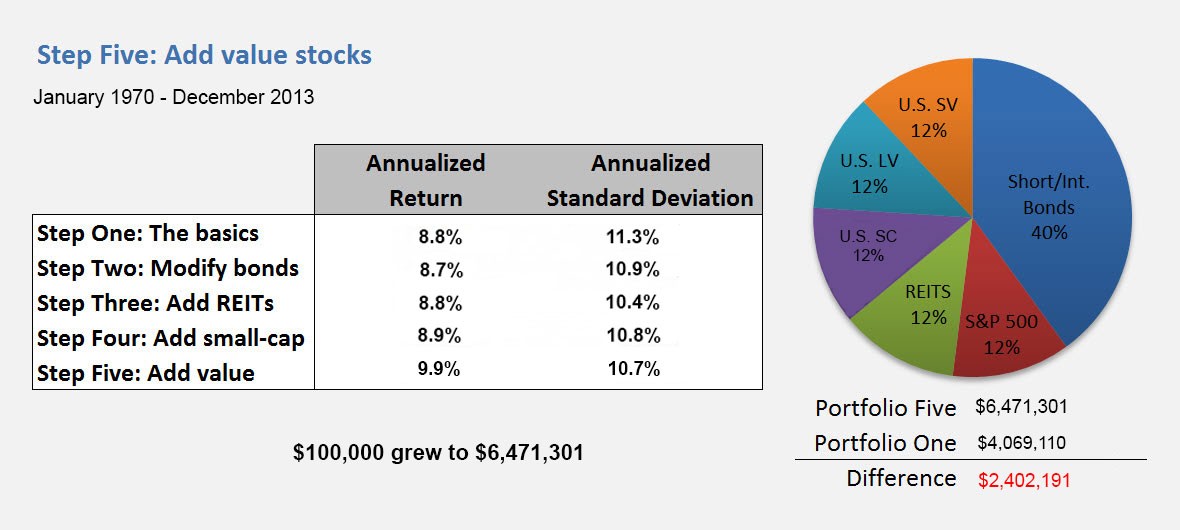The Difference Between Growth and Value Funds Not Much
Post on: 12 Июнь, 2015 No Comment

Recent Posts:
Whats the Difference Between Growth and Value Funds? Not Much.
An important challenge for mutual fund investors is determining what combination of investments provides true diversification. Does a particular asset class truly improve your portfolio’s risk/reward profile or is it just another way for fund companies to push product on the unwary?
A prime case in point is the distinction or lack thereof between growth and value.
Most fund providers offer both types of portfolios, with many companies making the distinction in the large-, mid- and small-cap categories. This causes investors to feel the need to allocate cash to at least two funds (and sometimes more) to achieve what they think is true diversification. The notion of dividing up a fund portfolio in this manner has been firmly reinforced by the Morningstar “style box,” which categorizes funds based on average market cap and three investment styles: growth, value or blend.
But is this type of slicing and dicing really necessary?
A look at some numbers shows that the returns of “growth” and “value” are in fact nearly identical across all market cap ranges in the past decade. Whats more, correlations are so high as to disabuse any notion that allocating between the two styles provides anything but the tiniest degree of diversification. Lets look at the Russell indices for some examples:
- Large Caps: In the past decade, the Russell 1000 Growth Index has delivered an average annual return of 7.26% less than a half-percentage point from the 7.63% return of the Russell 1000 Value. In turn, each category is within just 30 basis points of the 7.52% return of the Russell 1000 Index, which combines both growth and value.
- Midcaps: Same story here. The Russell MidCap Index has a 10-year return of 10.48%, and both the growth (9.77%) and value (10.75%) indices have provided returns that show little advantage to diversifying between the two styles rather than opting for a single fund.
- Small Caps: One might expect the story to be different in small caps, but the results are even closer than in the large- and midcap areas. The Russell 2000 Value Index has a 10-year return of 9.10%, right in line with the 9.45% gain of the Growth Index and 9.34% for the blended Russell 2000 Index.
Here, a product manager at a fund company will enthusiastically cite the benefits of diversification. But again, the claim doesn’t stand up to analysis.
The table below shows the correlation between the growth and value styles for large-, mid- and small-cap stocks, using the ETFs that track the indices mentioned above. Keep in mind, correlations run from -1.0 to 1.0, with 1.0 denoting perfect correlation and anything over 0.6 indicating a strong correlation. As the table below demonstrates, there is almost no diversification benefit to splitting up assets between growth and value:














